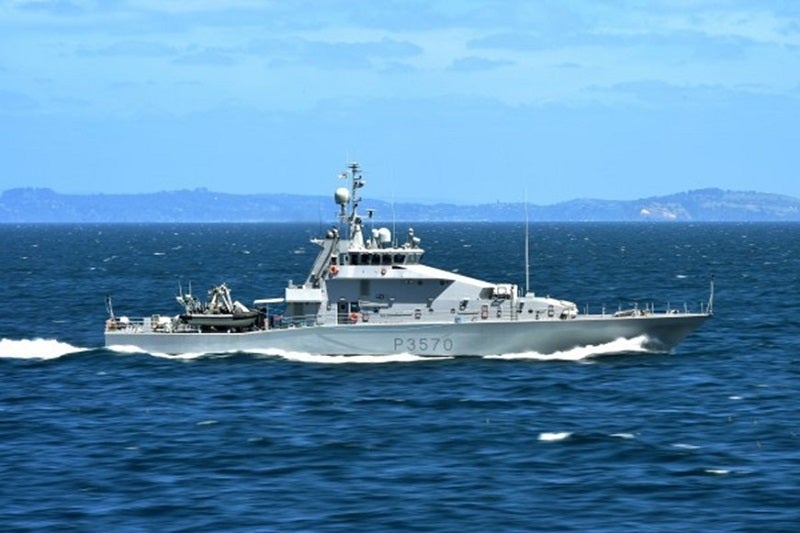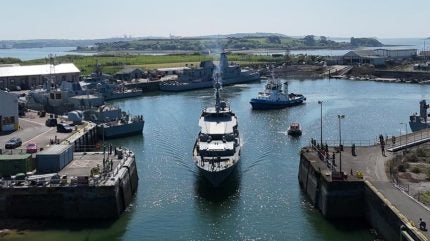Following the acquisition of two Lake-class Inshore Patrol Vessels (IPVs) from New Zealand (NZ) in 2022, the Irish Naval Service requested additional instruction in operating the first of the regenerated fleet, LE Aoibhinn.
Former Commanding Officer Lieutenant Fletcher Slierendrecht, Warrant Officer Marine Technician (proulsion) Wayne Freeman and Leading Marine technician (electrical) William Ikenasio helped support their familiarisation of the ship during ten days of sea trials from Haulbowline naval base in County Cork.
The Royal New Zealand Navy (RNZN) team provided informal training and advice across a variety of areas from ship handling, davit operation and machinery as well as auxiliary system familiarisation.
“We were really there to provide that additional 5 to 10% from our experience operating these vessels in New Zealand,” stated one NZ serviceman.
Irish personnel were said to be well prepared, with key members previously joining the RNZN crew for rides aboard Aoibhinn when she formerly served as HMNZS Taupo, the fourth and final ship in the Lake-class.
Lake-class IPVs
BAE Systems Australia, formerly Tenix Defence, deisgned and built the IPVs to undertake maritime security patrols, surveillance, boarding operations, navigation training and response to search and rescue call-outs.
Access the most comprehensive Company Profiles
on the market, powered by GlobalData. Save hours of research. Gain competitive edge.

Company Profile – free
sample
Your download email will arrive shortly
We are confident about the
unique
quality of our Company Profiles. However, we want you to make the most
beneficial
decision for your business, so we offer a free sample that you can download by
submitting the below form
By GlobalData

Each vessel has an overall length of 55 metres (m), a beam of 9m and a draft of 2.9m. The displacement of the ship is 340 tonnes, and it can accomodate 36 personnel. They can also house two highly capable sea boats for close inshore enforcement missions. The IPV features well designed spaces to provide better comfort for both crew and embarked client agency officials or observers.
The two vessels have traversed New Zealand’s 15,000 kilometre coastline and out to the 200 nautical mile limit of the nation’s exclusive economic zone since 2008.
Ireland’s future maritime operations
RNZN personnel often have other ancillary roles besides their primary responsibility in the crew, while the Irish Naval Service operates more rigidly according to specific specialisations.
For their IPVs, the Irish Naval Service are considering adopting the Kiwi model, with the added beneift of a smaller crew.
Moreover, the induction of the two IPVs came just before the Irish Air Corps welcomed its latest two Airbus C295 maritime patrol aircraft worth €230m ($252.2). These new aircraft will replace the two existing CASA CN235-100 maritime patrol aircraft purchased in 1994.
“Being an island, many of the risks and threats listed in the EU Maritime Security Strategy are relevant to Ireland’s maritime domain,” an Irish White Paper explained back in 2019. “This includes threats to Ireland’s economic resources arising from illegal, unreported and unregulated fishing or other illegal exploitation of Ireland’s maritime resources.”





